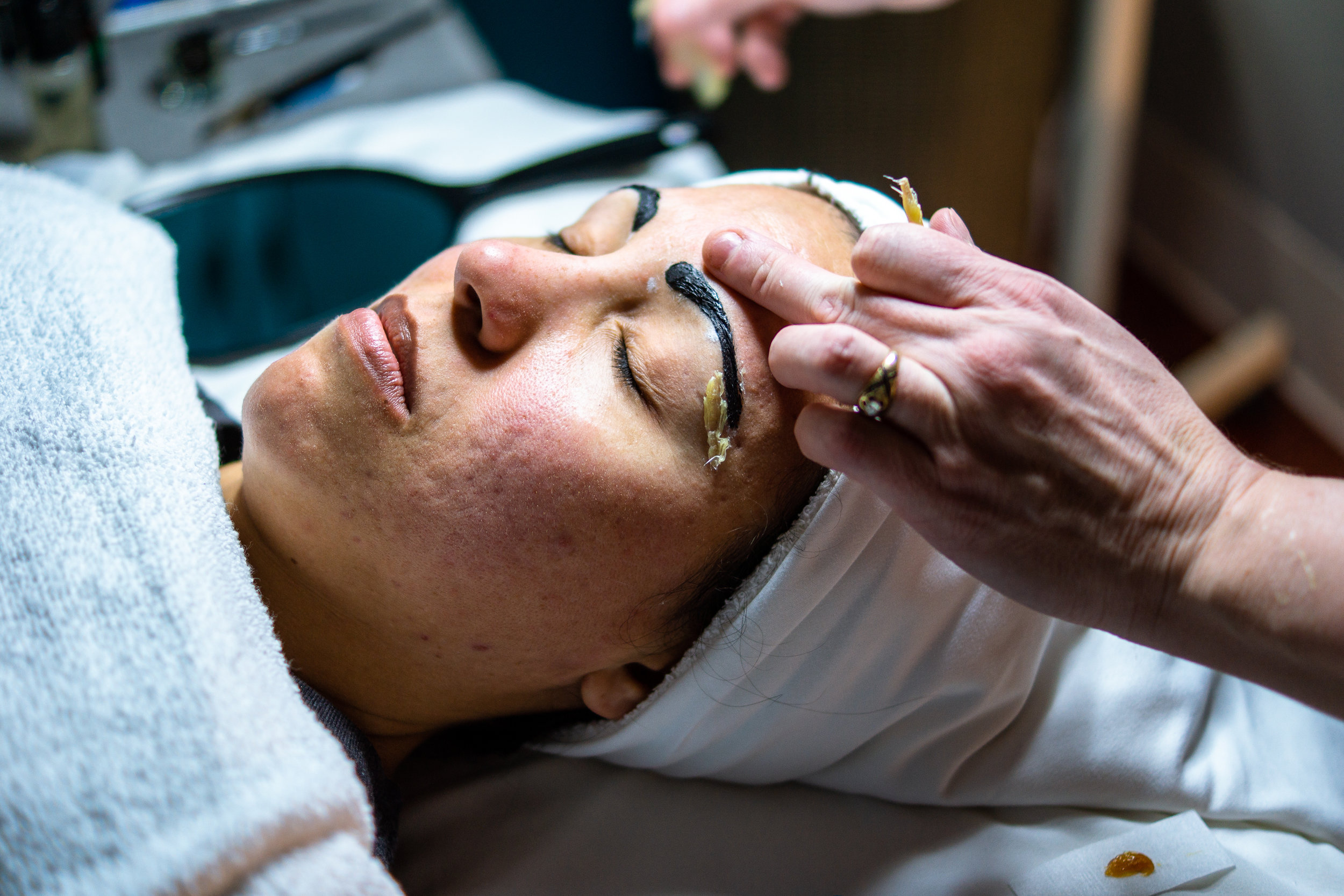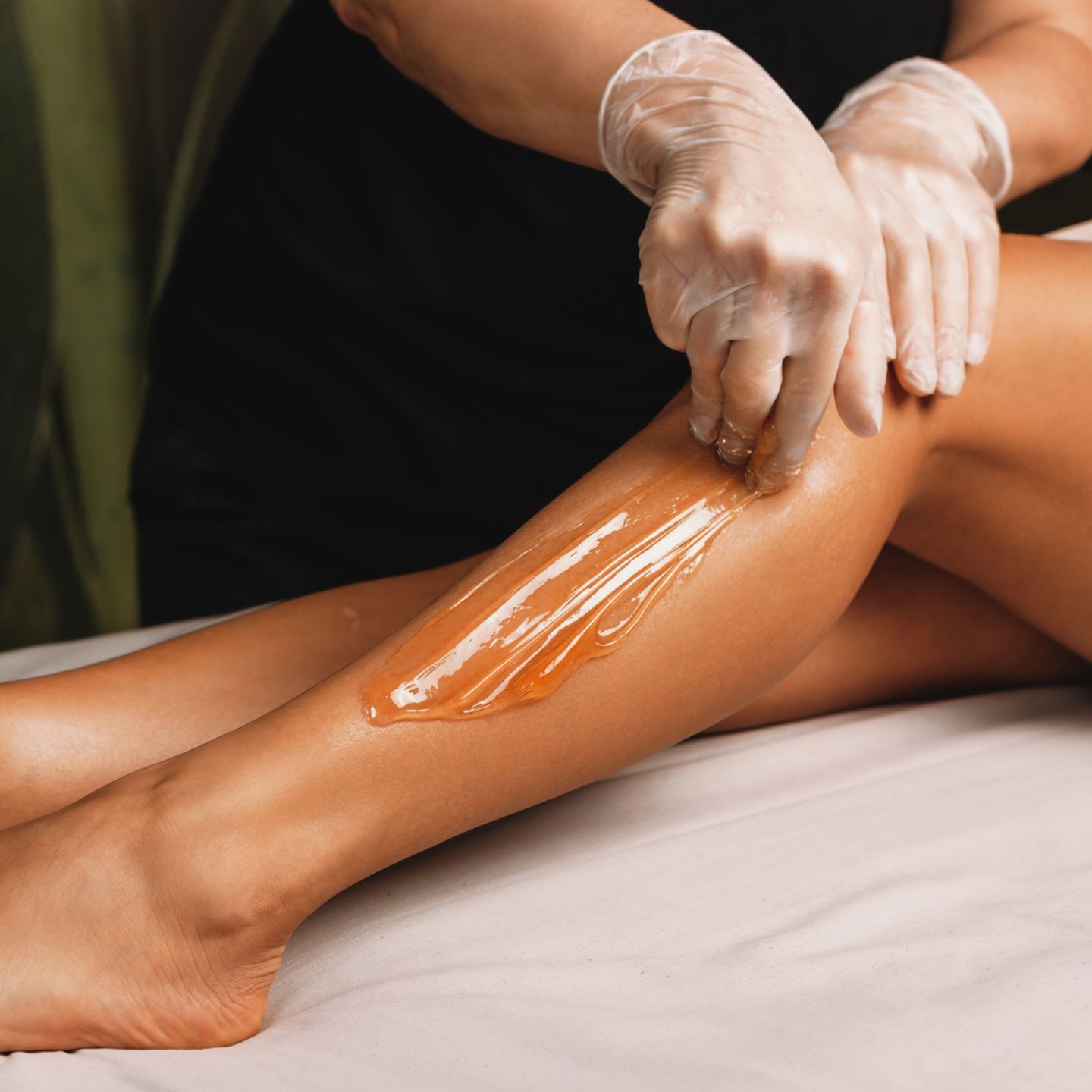Smooth Excellence Waits For: Introducing the Virtuosity of Waxing at Hyde Beauty & Wellness
Smooth Excellence Waits For: Introducing the Virtuosity of Waxing at Hyde Beauty & Wellness
Blog Article
Say Goodbye to Unwanted Hair With Effective Waxing Therapies
Undesirable hair can be a nuisance, however the good news is, there work waxing treatments readily available to aid you say goodbye to it. From the benefits of waxing to various kinds of therapies and tips for preserving smooth, hair-free skin, this conversation will certainly cover all you need to understand about this prominent hair elimination approach. So, if you're tired of continuously shaving or dealing with irritable regrowth, maintain checking out to uncover the marvels of shaving and just how it can revolutionize your hair removal routine.
The Benefits of Waxing
Unlike other methods such as shaving or making use of depilatory lotions, waxing eliminates hair from the root, resulting in a smoother coating and slower regrowth. As an outcome, the regrowth is typically sparser and better, making waxing a much more effective and efficient approach of hair removal.
When the wax is applied and then removed, it takes away dead skin cells, leaving the skin sensation smooth and soft. Furthermore, waxing can also aid to lighten dark areas and decrease the appearance of marks or coloring, providing the skin a more even and glowing skin tone.
While cutting just cuts the hair at the surface area level, waxing gets rid of the entire hair shaft, resulting in slower regrowth. On average, waxing can maintain the skin hair-free for up to four to 6 weeks, depending on the individual's hair development cycle.
Different Types of Waxing Treatments
There are various approaches of hair removal that entail using waxing methods. Waxing is a reliable and popular means to remove undesirable hair from various components of the body. Different kinds of waxing therapies deal with various needs and preferences. Allow's explore several of the most typical kinds of waxing treatments offered.
Strip Shaving: This is the most standard kind of waxing where a thin layer of wax is put on the skin and after that got rid of using a cloth strip. Strip shaving is ideal for bigger areas like the legs, arms, and back.
Warm Shaving: Warm waxing entails the application of warmed wax directly onto the skin. The wax hardens as it cools and is then removed without the requirement for fabric strips.
Sugaring: Sugaring is an all-natural choice to waxing that makes use of a paste constructed from sugar, water, and lemon juice (Hyde Beauty & Wellness). The paste is related to the skin and after that flicked off to remove the hair. Sugaring is known for being gentle on the skin and can be used on any part of the body.
Difficult Shaving: Difficult waxing, also called stripless waxing, is a method where a thick layer of wax is used straight to the skin and enabled to solidify. When hardened, the wax is removed without the need for towel strips. Tough shaving is appropriate for sensitive areas like the face, underarms, and swimwear line.
Each type of waxing treatment uses its very own advantages and disadvantages, so it's important to pick the one that suits your requirements and choices. Consulting with a specialist esthetician can assist figure out the most effective waxing therapy for you.
Getting Ready For a Waxing Therapy
To guarantee a successful waxing therapy, it is very important to properly prepare your skin in advance. By taking the required actions to prepare your skin, you can reduce pain and accomplish the very best outcomes.
Before your waxing consultation, it is recommended to scrub your skin. This helps to eliminate any kind of dead skin cells and allows the wax to adhere far better to the hair follicles.

Moreover, it is suggested to stay clear of using any kind our website of oils, creams, or creams to the skin on the day of your waxing treatment. These items can develop an obstacle in between the hair and the wax, making it tough for the wax to stick appropriately. It is best to show up with clean, dry skin for the most effective outcomes.

What to Anticipate During a Waxing Session
Throughout a waxing session, a qualified esthetician will carefully use warm wax to the wanted area and after that promptly remove it, in addition to the unwanted hair, using a fabric strip. This process is duplicated until the whole area is dealt with.
Before beginning the session, the esthetician will clean the area to be waxed to get rid of any type of oils, lotions, or dirt that might hinder the wax adhering correctly to the hair. They may also apply a light dusting of powder to ensure the wax adheres to the hair and not the skin.
Once the wax is used, the esthetician will certainly press a towel strip onto the waxed area, ensuring it sticks well. They will then promptly pull the strip in the opposite instructions of hair growth, eliminating the wax and hair from the origin. This might cause a short-lived stinging or discomfort, which must subside rapidly.
After the shaving is full, the esthetician may apply a calming cream or gel to the treated area to ease any potential inflammation or irritability. They will certainly also offer aftercare guidelines, which might consist of avoiding sun exposure, scrubing the location regularly, and refraining from shaving in between waxing sessions.
Tips for Keeping Smooth, Hair-Free Skin
For people aiming to maintain smooth, hair-free skin after waxing treatments, establishing a consistent skincare routine is vital. Adhering to a couple of straightforward tips can help ensure that your skin stays hair-free and silky for longer periods of time.
Peeling aids to get rid of dead skin cells and stop ingrown hairs. Use a gentle exfoliating scrub or brush to delicately jettison off any type of dead skin, focusing on the waxed locations.
After waxing, the skin can come to be completely dry and sensitive. Using a hydrating cream or oil can help calm the skin, stop irritation, and keep its all-natural moisture equilibrium.
Finally, stay clear of subjecting the waxed areas to guide sunlight or tanning beds. UV rays can harm the skin and make it much more vulnerable to pigmentation changes and inflammation. If you do need to hang around outdoors, be sure to use a broad-spectrum sunscreen with a minimum of SPF 30 to shield your waxed skin.
Conclusion
In conclusion, waxing treatments use numerous benefits for those seeking a hair-free and smooth skin. Various kinds of waxing therapies provide to various preferences and skin types.
When the wax is applied and after that find got rid of, it takes away dead skin cells, leaving the skin sensation soft and smooth. Strip Waxing: This is the most conventional type of waxing where a thin layer of wax is used to the skin and after that got rid Recommended Reading of making use of a towel strip. Warm Waxing: Hot waxing involves the application of heated wax directly onto the skin. These products can create a barrier between the wax and the hair, making it difficult for the wax to stick effectively.As soon as the wax is used, the esthetician will certainly press a cloth strip onto the waxed area, ensuring it adheres well.
Report this page